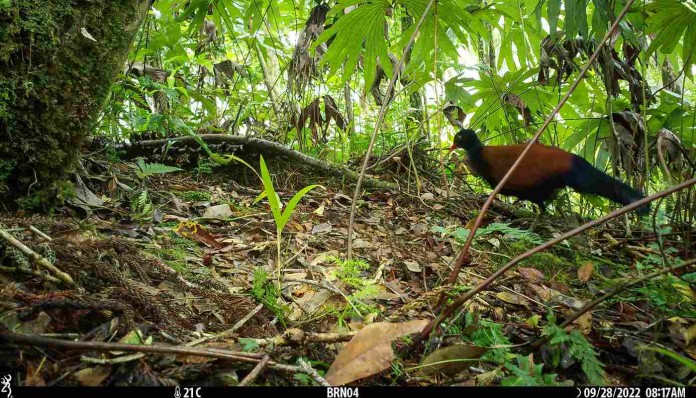The northern bald ibis was extinct in central Europe for 300 years. Now, it has returned – and scientist “foster parents” aboard a tiny plane are teaching the birds to fly their long-forgotten migration routes.
Thirty-six of these endangered birds are now following an ultralight aircraft 1,740 miles (2,800km ) from Austria to Spain, on a trip that could take up to 50 days to complete.
During the flight, human foster parents sit on the back of the microlight, waving and shouting encouragement to the birds as they fly. Biologist Johannes Fritz – who came up with the idea – pilots the small aircraft, which has a small fan-like motor on the back and yellow parachute keeping it aloft.
It is the first attempt to reintroduce a migratory species using this technique, said Fritz. “It’s an almost surreal experience, to be up there in the sky with these birds, experiencing them in the air, perfectly shaped for flying. It’s a touching and extraordinary experience.”

Fritz was inspired by the 1996 film Fly Away Home in which the main character flies an ultralight plane to show orphaned geese their migratory path. The film was based on the work of “Father Goose” Bill Lishman, a naturalist who taught Canada geese in the same way in 1988.
The northern bald ibis – or the Waldrapp – was once common across north Africa, the Arabian peninsula and much of Europe, but the birds were widely hunted and their habitat destroyed. For more than 300 years they were extinct in central Europe, with small populations surviving in zoos.

Breeding efforts to increase their population over the past two decades have been successful, but without guidance from wild ancestors, the birds – known for their bald red head and long curved beak – no longer had any knowledge of which direction to fly for winter. Early reintroduction attempts were largely unsuccessful – instead of returning to suitable wintering grounds such as Tuscany, Italy, the birds flew in different directions and died.
To prepare them for travel, the chicks were removed from their breeding colonies in Rosegg zoo in Austria at just a few days old, taken to an aviary and looked after by a human foster parent to “imprint”. Once this happens, the birds trust the human enough to follow them along the migration route.
This year marks the 17th journey with human guides. The current flock is still en route – they started their journey on 13 August and expect to arrive in Vejer de la Frontera in Andalusia in early October.
Barbara Steininger, a foster mother, said she acts like “their bird mom” and develops individual relationships with every bird. “We feed them, we clean them, we clean their nests. We take good care of them and see that they are healthy birds,” she said.

When they reach the wintering grounds, the birds become fully independent and no longer need their foster parents, although they still recognise them years later and actively approach to say hello (the birds have a ritual greeting in which they spread their hair and bow, making a “chrrupp” noise).
The central European population has increased from zero to almost 300 since the start of the project in 2002, and in 2011 the first bird migrated back to Bavaria from Tuscany without human help.
The first generations have already bred in the wild, and taught their offspring the migratory path they learned from humans. But the climate crisis is making this migration more challenging, and means humans need to guide younger generations along new routes. The ibis migrate later in the season now, which forces them to cross the Alps in colder, more dangerous weather. In response, the Waldrapp team piloted a new route in 2023, from Bavaria to Andalusia in southern Spain. This year’s route is approximately 186 miles longer than last year’s.

The effort is not just for the northern bald ibis: it is about paving the way for other threatened migratory species, said Fritz. “This method which we’ve developed with the bald ibis is urgently needed for an increasing number of other migratory bird species. It’s a flagship project which indicates what is possible.”
Fritz would like to do more projects with geese, cranes, storks or other ibis. “I think I can fall in love with every species which I work with … I would love to continue flying with birds,” he said.
This article by Phoebe Weston was first published by The Guardian on 28 August 2024. Lead Image: A flock of northern bald ibis, or Waldrapp, are led along by ‘foster parents’ in a tiny aircraft. The journey is expected to take up to 50 days.
Photograph: AP.
What you can do
Help to save wildlife by donating as little as $1 – It only takes a minute.







Leave a Reply